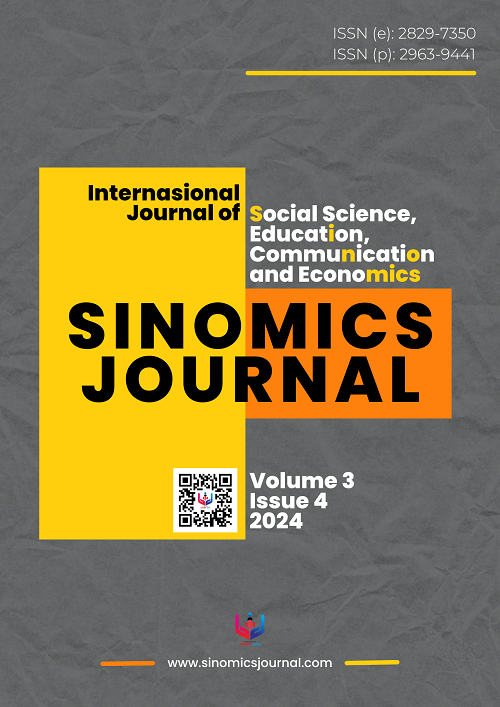The Effect of Village Funds, Labor Force Participation Rate, and Average Years of Schooling on Per Capita Income in Underdeveloped Regions of Sumatra Island
DOI:
https://doi.org/10.54443/sj.v3i4.412Keywords:
Village Funds, Labor Force Participation Rate, Average Years of Schooling, Per Capita Income, Underdeveloped Regions, Sumatra IslandAbstract
This study analyzes the effect of Village Funds, the Labor Force Participation Rate (LFPR), and Average Years of Schooling (AYS) on per capita income in underdeveloped regions of Sumatra Island. Underdeveloped regions in Indonesia continue to face significant challenges in improving the welfare of their populations, with factors such as Village Funds, labor force participation, and education playing crucial roles in poverty alleviation. This research uses secondary data from Statistics Indonesia (BPS) and related institutions, employing regression analysis to examine the impact of these variables on per capita income. The results indicate that Village Funds and the Labor Force Participation Rate have a significant positive impact on per capita income, while Average Years of Schooling has a smaller but still significant effect. These findings provide valuable insights for policymakers in formulating development strategies aimed at improving welfare in underdeveloped areas. Approaches that involve more effective management of Village Funds, improving education quality, and enhancing labor force participation can serve as strategic steps to address economic disparities across regions in Sumatra Island.
Downloads
References
Baerlocher, D., Parente, S. L., & Rios-Neto, E. (2021). Female Labor Force Participation and economic growth: Accounting for the gender bonus. Economics Letters, 200, 109740. https://doi.org/10.1016/j.econlet.2021.109740
Badan Keahlian, DPR RI. (2020). Analisis RKP dan Pembicaraan Pendahuluan APBN.
Badan Perencanaan Pembangunan Nasional (BAPPENAS). (2020). Pemutakhiran.
BPS. (2021). Statistik Pendidikan 2021.
BPS. (2022). Statistik Indonesia 2022.
Kolaborasi Masyarakat dan Pelayanan untuk Kesejahteraan (KOMPAK). (2017). Dana Desa dan Penanggulangan Kemiskinan.
Mankiw, N. G. (2018). Pengantar Ekonomi Makro (Edisi Ketujuh). Salemba Empat.
Pasaribu, R. B. F. (2012). Teori-teori Pembangunan. Fakultas Ekonomi dan Bisnis, Universitas Gunadarma.
Pinilas, A., Kumenaung, A. G., & Rorong, I. P. (2019). Pengaruh Dana Desa Terhadap Pendapatan Masyarakat di Kabupaten Kepulauan Talaud. Jurnal Berkala Ilmiah Efisiensi, 19(3).
Presiden Republik Indonesia. (2020). RPJMN 2020-2024.
Rencana Kerja Pemerintah Tahun 2021.
Salvatore, D. (2008). Ekonomi Mikro. Salemba Empat.
Sukirno, S. (2019). Makroekonomi Teori Pengantar (Edisi Ketiga). Rajawali Pers.
Todaro, M. P., & Smith, S. C. (2011). Pembangunan Ekonomi (Edisi 11). Erlangga.
Widarjono, A. (2018a). Ekonometrika Pengantar Dan Aplikasinya Disertai Panduan Eviews (Edisi Kelima). UPP STIM YKPN Yogyakarta.
Widarjono, A. (2018b). Ekonometrika: Pengantar dan Aplikasinya Disertai Panduan EViews (5th ed.). UPP STIM YKPN.
Yin, X., Jiayi, G., & Selvaratnam, D. P. (2024). The Effect of Average Years of Schooling on GDP Per Capita Change Rate: Evidence from Malaysia. International Journal of Social Science and Human Research, 7(06). https://doi.org/10.47191/ijsshr/v7-i06-67
Adam Smith. (1776). An Inquiry into the Nature and Causes of the Wealth of Nations.
Solow, R. M. (1956). A Contribution to the Theory of Economic Growth. The Quarterly Journal of Economics, 70(1), 65–94.
Todaro, M. P., & Smith, S. C. (2011). Economic Development (12th Edition). Pearson.
Downloads
Published
How to Cite
License
Copyright (c) 2024 Deffa Lionanta, Taher

This work is licensed under a Creative Commons Attribution 4.0 International License.























